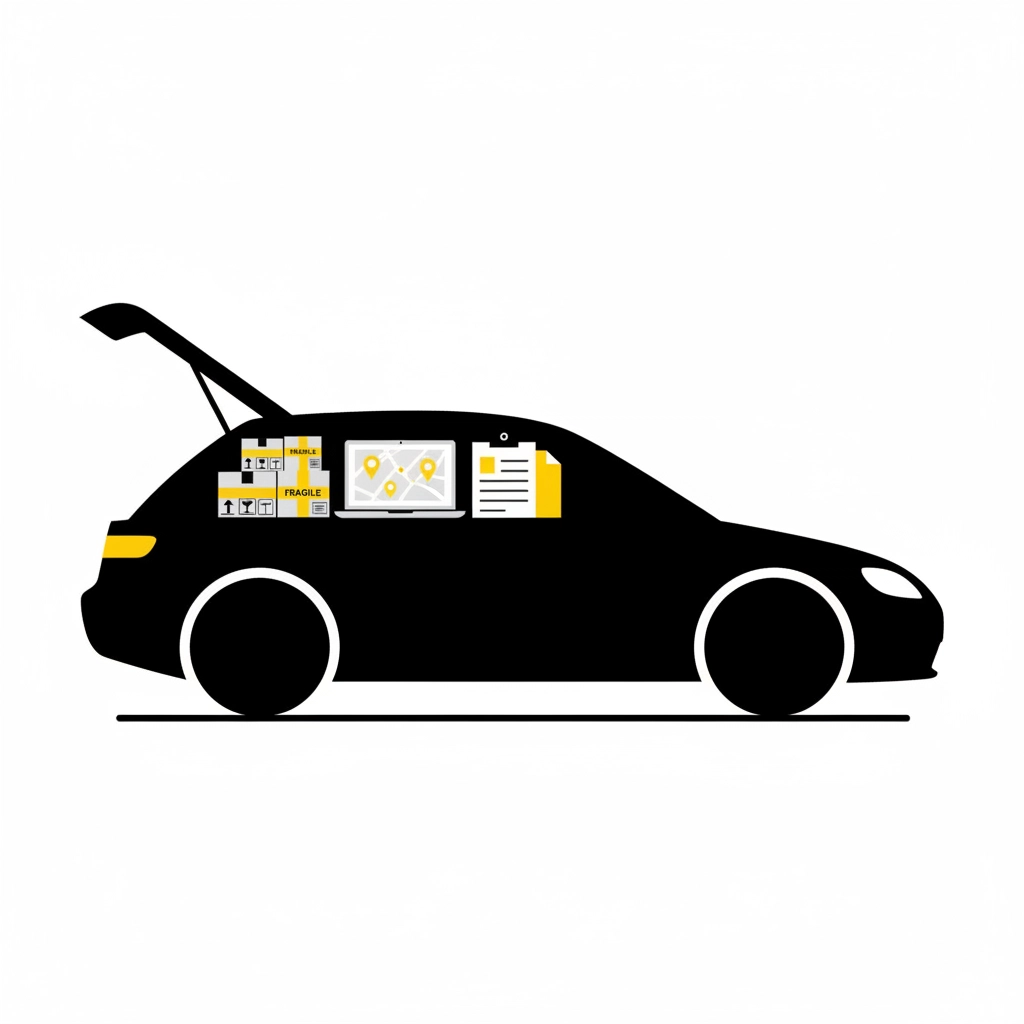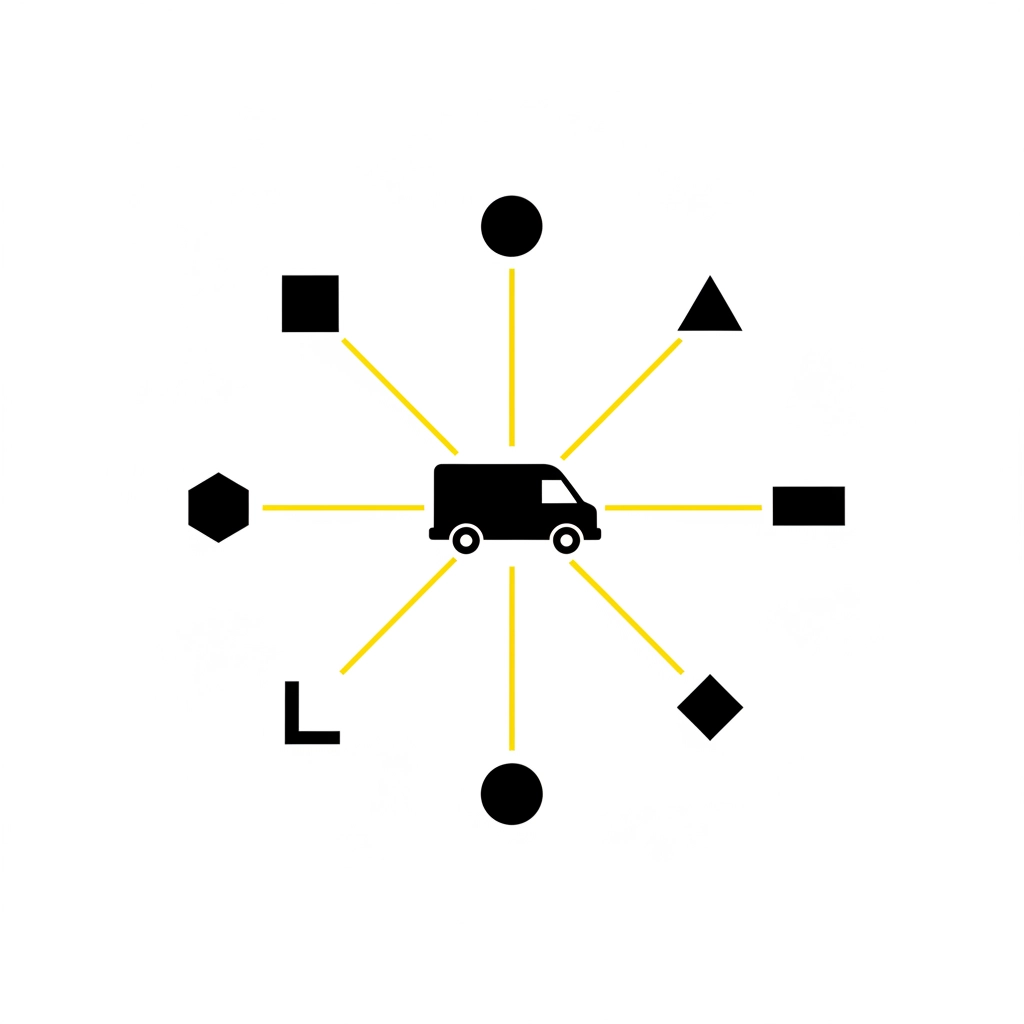Choosing the Right Courier Vehicle Size for Your Business Needs
Choosing the right courier vehicle isn't just about finding something with four wheels and a cargo area. The wrong choice can cost you money, frustrate your customers, and leave you scrambling when that urgent delivery doesn't fit. Whether you're setting up a new business, expanding your services, or just tired of cramming oversized items into undersized vans, getting your vehicle sizing right makes all the difference.
The good news? There's actually a pretty straightforward system for matching your needs to the right vehicle. Let's break down everything from compact cars to full-size Luton vans, so you can make smart decisions that keep your business moving.
Understanding Your Vehicle Options
Cars: The Nimble Option
Don't underestimate the humble car for courier work. Perfect for documents, parcels, laptops, and critical equipment, cars offer unbeatable fuel efficiency and can navigate traffic jams that would leave larger vehicles stuck. They're also your cheapest option for very small items that need to get somewhere fast.
Cars work brilliantly for same-day document delivery, small IT equipment transport, or those emergency laptop deliveries that keep remote workers productive. The trade-off is obvious: limited space means you're not moving anything bulky, but for high-priority small items, nothing beats a car's speed and efficiency.

Short Wheelbase (SWB) Vans: The Sweet Spot for Small Loads
With up to 2m of loading length, SWB vans bridge the gap between cars and larger commercial vehicles. They're perfect for smaller items that won't fit in a car but don't justify the expense of a bigger van.
Think replacement parts, small furniture items, multiple parcel deliveries, or equipment that needs more protection than a car boot provides. SWB vans typically offer better fuel economy than their larger cousins while giving you proper commercial vehicle capabilities.
Mid Wheelbase (MWB) Vans: The UK Standard
There's a reason MWB vans are the most common commercial vehicles on British roads. With up to 3m of loading space, they hit the perfect balance between fuel efficiency and load capacity. For most businesses, this is the goldilocks zone: not too small, not too large, but just right.
MWB vans excel at mixed delivery work where you might have several different sized items on one route. They're also ideal for equipment collection services, offering enough space for bulky items without the running costs of larger vehicles.
Long Wheelbase (LWB) Vans: Maximum Length, Lower Height
Stretching up to 4m in length, LWB vans offer serious cargo capacity while maintaining better fuel efficiency than Luton vans. They're less wide than Lutons, making them easier to maneuver in tight spaces, but they make up for it with that extended loading area.
These work particularly well for businesses that regularly handle long, relatively flat items: think furniture, equipment racks, or multiple pallet loads that don't require maximum height clearance.

Luton Vans: The Heavy-Duty Champions
When you need serious capacity, Luton vans deliver. At up to 4.1m in length, they excel in height dimensions and often come equipped with tail lifts for heavy items. Here's the impressive bit: a Luton van can move the contents of an average 2-bedroom flat in a single trip.
The tail lift feature makes Lutons particularly valuable for equipment returns and collection services. When you're dealing with heavy IT equipment, industrial machinery, or any items that would otherwise require multiple people to lift safely, that tail lift becomes essential rather than optional.
Matching Vehicles to Business Needs
Equipment Returns and Collection
If your business focuses on equipment returns and collection, vehicle choice becomes critical. Heavy IT equipment, industrial components, and end-of-lease machinery often exceed what smaller vehicles can safely handle.
Luton vans with tail lifts are often the smart choice here. The combination of loading capacity, height clearance, and mechanical lifting assistance means you can handle returns that would otherwise require specialized equipment or multiple trips. This is particularly important when dealing with server equipment, large monitors, or industrial printing equipment that combines weight with awkward dimensions.
For smaller equipment returns: laptops, tablets, smaller networking equipment: MWB or LWB vans often provide the right balance. You get professional service capabilities without the higher running costs of a Luton van.
Multi-Drop Business Deliveries
Business-to-business delivery routes often involve multiple stops with varying load sizes. This is where the MWB van really shines. You can accommodate several different deliveries in one trip without the fuel penalty of a larger vehicle.
The key consideration is loading accessibility. Side doors and low loading heights become valuable when you're making frequent stops. Spending extra time wrestling items in and out of a high-sided van quickly adds up over multiple deliveries.

Same-Day Emergency Services
Emergency deliveries often prioritize speed over capacity. For critical documents, replacement parts, or urgent IT equipment, cars and SWB vans typically offer the best combination of speed and cost-effectiveness.
The smaller vehicle size means easier parking, faster navigation through traffic, and lower fuel costs: all important when you're providing emergency services where time is more valuable than cargo capacity.
Cost Considerations and Efficiency
Fuel Efficiency vs. Capacity
Larger vehicles cost more to run, but they can often reduce the total number of trips required. The calculation isn't always straightforward, though. A Luton van might use more fuel than an MWB van, but if it eliminates return trips or allows you to take on larger jobs, the economics can work in your favour.
Consider your typical job mix. If most of your work involves smaller items that could fit in multiple vehicle types, the smaller option usually wins on cost. But if you regularly turn down work because it won't fit in your current vehicle, upgrading might pay for itself quickly.
Driver Requirements and Licensing
Most courier work can be handled with a standard driving license, but larger vehicles may require additional training or qualifications. Factor this into your decision: especially if you're planning to employ drivers rather than handle deliveries yourself.
The good news is that most vans up to 3.5 tonnes gross vehicle weight can be driven on a standard UK license, which covers everything from cars up to most Luton vans in courier service.
Getting the Best Value
Flexibility in Vehicle Choice
Rather than committing to one vehicle type, consider how different sizes might serve different aspects of your business. Many successful courier services use a mix of vehicle sizes, allowing them to match the right vehicle to each specific job.
This approach also provides backup options when one vehicle is unavailable and allows you to take on a wider variety of work. You might use cars for urgent small deliveries, MWB vans for standard business work, and have access to Luton vans for larger equipment jobs.
Working with Professional Courier Services
If vehicle ownership doesn't make sense for your business volume, working with established courier services gives you access to the full range of vehicle types without the capital investment. Professional services like Jolly Couriers maintain fleets of different vehicle sizes, allowing you to choose the right option for each specific delivery.
This approach is particularly valuable for businesses with inconsistent delivery needs or those just starting to understand their typical requirements.
Making Your Decision
The right vehicle choice depends on honest assessment of your actual needs rather than worst-case scenarios. Most businesses find that covering 80% of their typical work with one vehicle type, then using alternative arrangements for exceptional loads, provides the best balance of cost and capability.
Start by tracking your delivery requirements over a month or two. Note the dimensions and weights of typical loads, the frequency of different job types, and any patterns in your work. This data makes vehicle selection much more straightforward.
For detailed technical specifications and guidance on matching vehicles to specific delivery types, check out our comprehensive FAQ section where we break down everything from dimensions to cost considerations.
Remember: choosing the right vehicle is about matching your tool to your work. Get it right, and your courier service runs smoothly. Get it wrong, and every delivery becomes a struggle.
